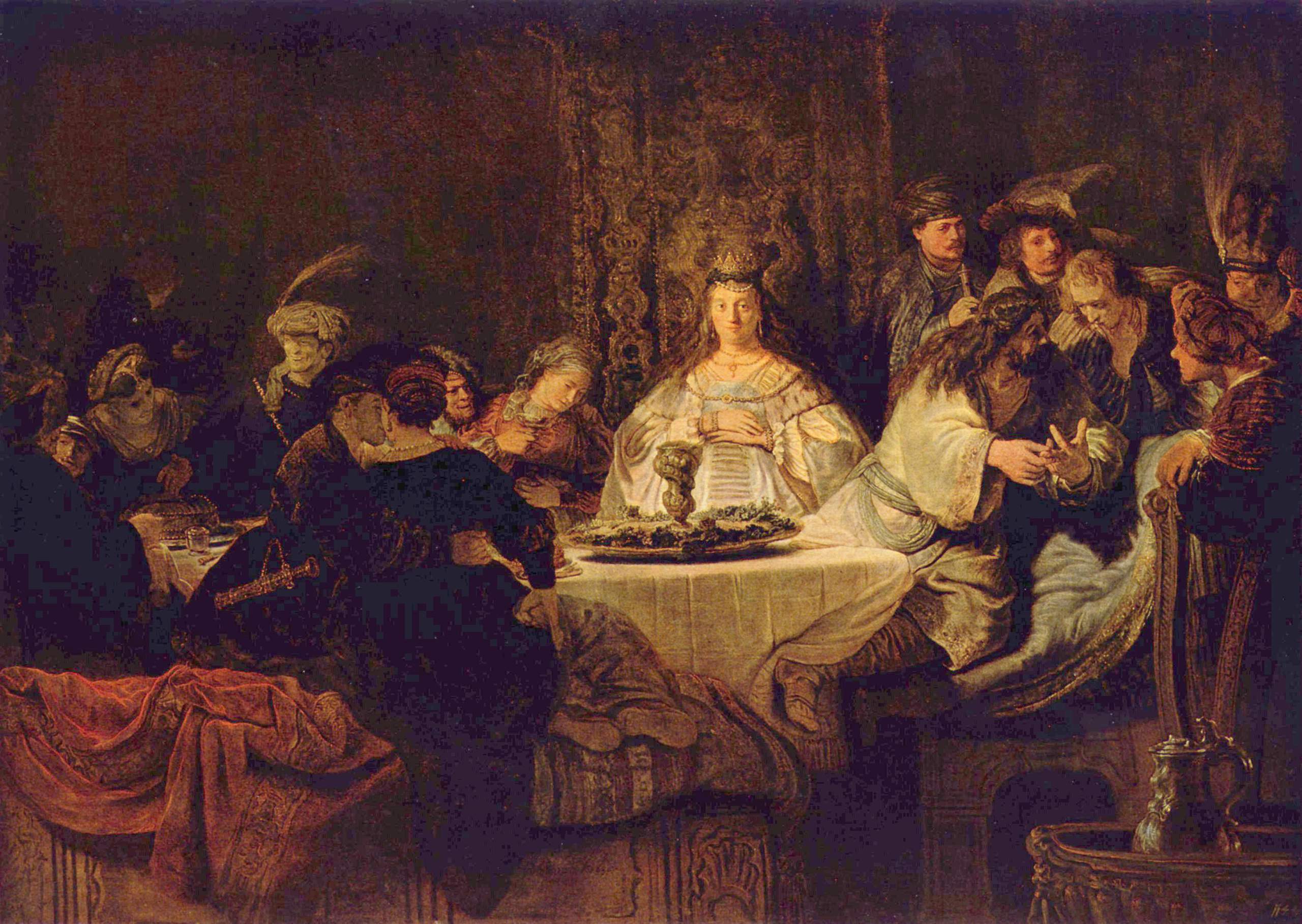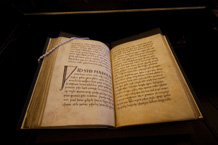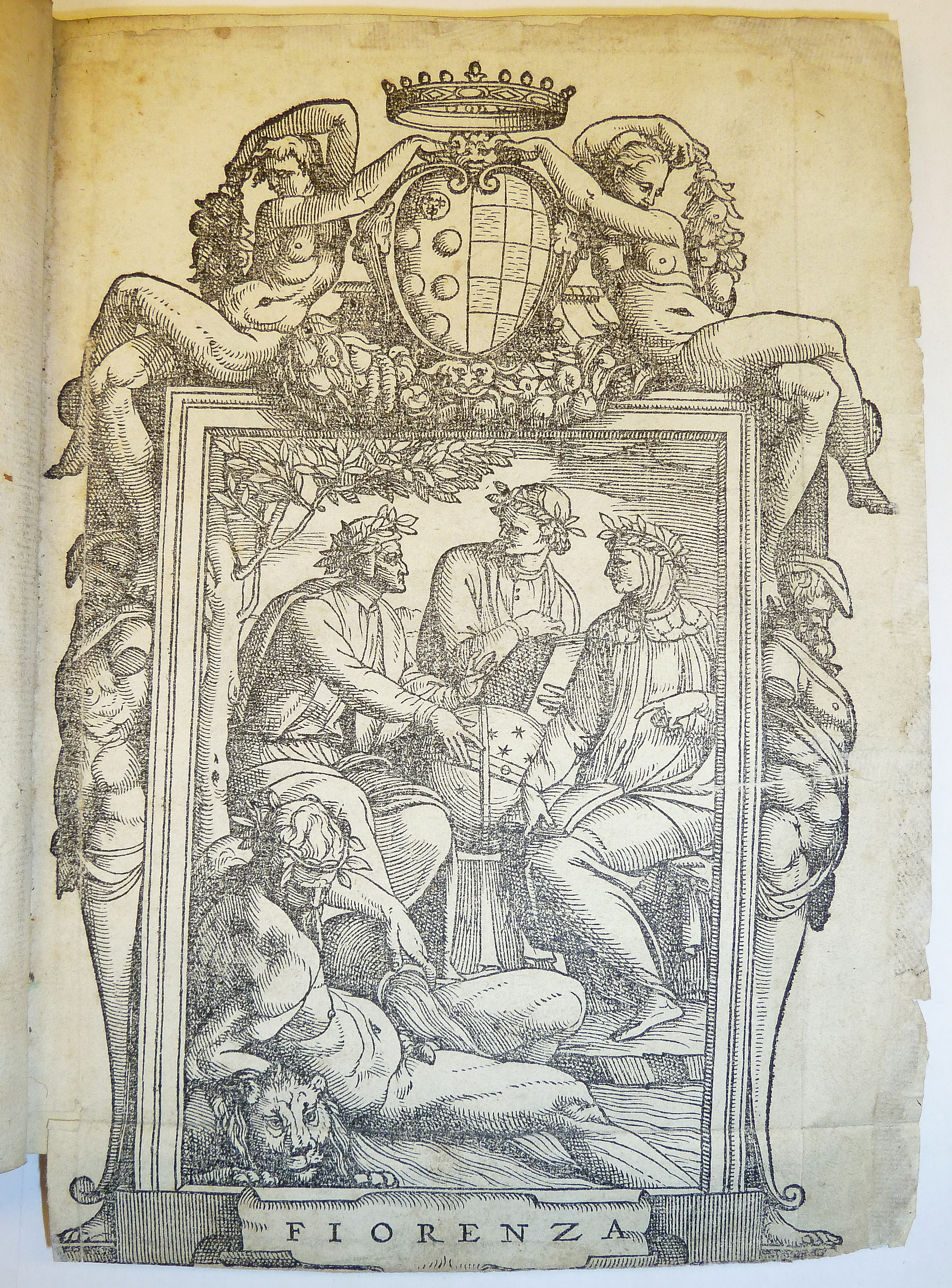|
Symphosius
Symphosius (sometimes, in older scholarship and less properly, Symposius) was the author of the ''Aenigmata'', an influential collection of 100 Latin riddles, probably from the late antique period. They have been transmitted along with their solutions. Biography Nothing more is known of Symphosius's life than what can be gleaned from the riddles themselves: even his name is clearly 'a joking pseudonym, meaning “party boy” or the like'. Proposed dates of composition have ranged from the third century to the sixth. The prevailing view today is that they were probably composed in the late fourth or early fifth century. A range of circumstantial evidence in the content of the riddles suggests that Symphosius was writing in Roman North Africa. The riddles The riddles themselves, written in tercets of dactylic hexameters, are of elegant Latinity. The author's brief preface states that they were written to form part of the entertainment at the Saturnalia. This could be a literary co ... [...More Info...] [...Related Items...] OR: [Wikipedia] [Google] [Baidu] |
Riddles Of Symphosius, London, British Library, Royal MA 12 C Xxiii Folio 104r
A riddle is a statement, question or phrase having a double or veiled meaning, put forth as a puzzle to be solved. Riddles are of two types: ''enigmas'', which are problems generally expressed in metaphorical or allegorical language that require ingenuity and careful thinking for their solution, and ''conundra'', which are questions relying for their effects on punning in either the question or the answer. Archer Taylor says that "we can probably say that riddling is a universal art" and cites riddles from hundreds of different cultures including Finnish, Hungarian, American Indian, Chinese, Russian, Dutch and Filipino sources amongst many others. Many riddles and riddle-themes are internationally widespread. In the assessment of Elli Köngäs-Maranda (originally writing about Malaitian riddles, but with an insight that has been taken up more widely), whereas myths serve to encode and establish social norms, "riddles make a point of playing with conceptual boundaries and cross ... [...More Info...] [...Related Items...] OR: [Wikipedia] [Google] [Baidu] |
Riddle
A riddle is a statement, question or phrase having a double or veiled meaning, put forth as a puzzle to be solved. Riddles are of two types: ''enigmas'', which are problems generally expressed in metaphorical or allegorical language that require ingenuity and careful thinking for their solution, and ''conundra'', which are questions relying for their effects on punning in either the question or the answer. Archer Taylor says that "we can probably say that riddling is a universal art" and cites riddles from hundreds of different cultures including Finnish, Hungarian, American Indian, Chinese, Russian, Dutch and Filipino sources amongst many others. Many riddles and riddle-themes are internationally widespread. In the assessment of Elli Köngäs-Maranda (originally writing about Malaitian riddles, but with an insight that has been taken up more widely), whereas myths serve to encode and establish social norms, "riddles make a point of playing with conceptual boundaries and cr ... [...More Info...] [...Related Items...] OR: [Wikipedia] [Google] [Baidu] |
Riddles Of Symphosius, London, British Library, Royal MA 12 C Xxiii Folio 105r
A riddle is a statement, question or phrase having a double or veiled meaning, put forth as a puzzle to be solved. Riddles are of two types: ''enigmas'', which are problems generally expressed in metaphorical or allegorical language that require ingenuity and careful thinking for their solution, and ''conundra'', which are questions relying for their effects on punning in either the question or the answer. Archer Taylor says that "we can probably say that riddling is a universal art" and cites riddles from hundreds of different cultures including Finnish, Hungarian, American Indian, Chinese, Russian, Dutch and Filipino sources amongst many others. Many riddles and riddle-themes are internationally widespread. In the assessment of Elli Köngäs-Maranda (originally writing about Malaitian riddles, but with an insight that has been taken up more widely), whereas myths serve to encode and establish social norms, "riddles make a point of playing with conceptual boundaries and cross ... [...More Info...] [...Related Items...] OR: [Wikipedia] [Google] [Baidu] |
Bern Riddles
The Bern Riddles, also known as ''Aenigmata Bernensia'', ''Aenigmata Hexasticha'' or ''Riddles of Tullius'', are a collection of 63 metrical Latin riddles, named after the location of their earliest surviving manuscript, which today is held in Bern (though probably produced in Bourges): the early eighth-century Codex Bernensis 611. Origin Although it has been suggested that they were composed in late antiquity, most scholars consider that the Bern Riddles were inspired by the c. fourth-century collection of riddles attributed to Symphosius, and date to around the seventh century. The author of the Bern Riddles is not known but they might have been written by "a Lombard familiar with Mediterranean flora and food"; perhaps in the monastery of Bobbio. According to Archer Taylor, "The Berne Riddles are especially interesting for the author's familiarity with the North Italian landscape and its plants. Whoever he was, we may safely call him the first medieval riddle-master in Italy" ... [...More Info...] [...Related Items...] OR: [Wikipedia] [Google] [Baidu] |
Apollonius Of Tyre
Apollonius of Tyre is the subject of an ancient short novella, popular in the Middle Ages. Existing in numerous forms in many languages, the text is thought to be translated from an ancient Greek manuscript, now lost. Plot summary In most versions, the eponymous hero is hunted and persecuted after he reveals Antiochus of Antioch's incestuous relationship with his daughter. After many travels and adventures, in which Apollonius loses both his wife and his daughter and thinks them both dead, he is eventually reunited with his family through unlikely circumstances or intercession by gods. In some English versions Apollonius is shipwrecked and becomes a tutor to a princess who falls in love with him, and the good king gradually discovers his daughter's wishes. The major themes are the punishment of inappropriate lust—the incestuous king invariably comes to a bad end—and the ultimate rewards of love and fidelity. Origins (Latin and Greek?) The story is first mentioned i ... [...More Info...] [...Related Items...] OR: [Wikipedia] [Google] [Baidu] |
LacusCurtius
LacusCurtius is a website specializing in ancient Rome, currently hosted on a server at the University of Chicago. It went online on August 26, 1997; in July 2021 it had "3707 webpages, 765 photos, 772 drawings & engravings, 120 plans, 139 maps." The site is the creation of William P. Thayer. Overview The main resources to be found on it include: * a number of Latin and Greek texts, usually in English translation, and often in the original language as well, * '' Smith's Dictionary of Greek and Roman Antiquities'', * '' Platner's Topographical Dictionary of Ancient Rome'', * several secondary works, mostly on Rome and Roman Britain, * a photogazetteer of Roman remains and medieval churches of central Italy including the city of Rome, * an often-cited online copy of Richard Hinckley Allen's '' Star Names: Their Lore and Meaning'', * the Antiquary's Shoebox, a selection of articles from classical studies journals that are now in public domain. The parent site also includes a large A ... [...More Info...] [...Related Items...] OR: [Wikipedia] [Google] [Baidu] |
Editio Princeps
In classical scholarship, the ''editio princeps'' ( plural: ''editiones principes'') of a work is the first printed edition of the work, that previously had existed only in manuscripts, which could be circulated only after being copied by hand. For example, the ''editio princeps'' of Homer is that of Demetrius Chalcondyles, now thought to be from 1488. The most important texts of classical Greek and Roman authors were for the most part produced in ''editiones principes'' in the years from 1465 to 1525, following the invention of the printing press around 1440.Briggs, Asa & Burke, Peter (2002) ''A Social History of the Media: from Gutenberg to the Internet'', Cambridge: Polity, pp. 15–23, 61–73. In some cases there were possibilities of partial publication, of publication first in translation (for example from Greek to Latin), and of a usage that simply equates with first edition. For a work with several strands of manuscript tradition that have diverged, such as ''Piers Pl ... [...More Info...] [...Related Items...] OR: [Wikipedia] [Google] [Baidu] |
Joachim Camerarius
Joachim Camerarius (12 April 150017 April 1574), the Elder, was a German classical scholar. Life He was born in Bamberg, in the Prince-Bishopric of Bamberg. His family name was Liebhard, but he was generally called Kammermeister, previous members of his family having held the office of chamberlain () to the bishops of Bamberg. He studied at Leipzig, Erfurt and Wittenberg, where he became intimate with Philipp Melanchthon. For some years he was teacher of history and Greek at the gymnasium in Nuremberg (Ägidiengymnasium). In 1530 he was sent as deputy for Nuremberg to the diet of Augsburg, where he helped Melanchthon in drawing up the Augsburg Confession. Five years later he was commissioned by Duke Ulrich of Württemberg to reorganize the University of Tübingen; and in 1541 he rendered a similar service at Leipzig, where the remainder of his life was chiefly spent. He played an important part in the Reformation movement, and his advice was frequently sought by leading men. I ... [...More Info...] [...Related Items...] OR: [Wikipedia] [Google] [Baidu] |
Renaissance Humanism
Renaissance humanism was a revival in the study of classical antiquity, at first in Italy and then spreading across Western Europe in the 14th, 15th, and 16th centuries. During the period, the term ''humanist'' ( it, umanista) referred to teachers and students of the humanities, known as the , which included grammar, rhetoric, history, poetry, and moral philosophy. It was not until the 19th century that this began to be called ''humanism'' instead of the original ''humanities'', and later by the retronym ''Renaissance humanism'' to distinguish it from later humanist developments. During the Renaissance period most humanists were Christians, so their concern was to "purify and renew Christianity", not to do away with it. Their vision was to return '' ad fontes'' ("to the sources") to the simplicity of the New Testament, bypassing the complexities of medieval theology. Under the influence and inspiration of the classics, humanists developed a new rhetoric and new learning. Some ... [...More Info...] [...Related Items...] OR: [Wikipedia] [Google] [Baidu] |
Tatwine
Tatwine ( – 30 July 734) was the tenth Archbishop of Canterbury from 731 to 734. Prior to becoming archbishop, he was a monk and abbot of a Benedictine monastery. Besides his ecclesiastical career, Tatwine was a writer, and riddles he composed survive. Another work he composed was on the grammar of the Latin language, which was aimed at advanced students of that language. He was subsequently considered a saint. Biography Tatwine was a Mercian by birth. His epigraph at Canterbury stated that when he died he was in old age, so perhaps he was born around 670. He became a monk at the monastery at Breedon-on-the-Hill in the present-day County of Leicestershire,Brooks ''Early History of the Church of Canterbury'' p. 80Yorke ''Kings and Kingdoms'' p. 31 and then abbot of that house.Stenton ''Anglo-Saxon England'' p. 183 Through the influence of King Æthelbald he was appointed as Archbishop of Canterbury in 731 and was consecrated on 10 June 731.Fryde, et al. ''Handbook of Brit ... [...More Info...] [...Related Items...] OR: [Wikipedia] [Google] [Baidu] |
Aldhelm
Aldhelm ( ang, Ealdhelm, la, Aldhelmus Malmesberiensis) (c. 63925 May 709), Abbot of Malmesbury Abbey, Bishop of Sherborne, and a writer and scholar of Latin poetry, was born before the middle of the 7th century. He is said to have been the son of Kenten, who was of the royal house of Wessex.Walsh ''A New Dictionary of Saints'' pp. 21–22 He was certainly not, as his early biographer Faritius asserts, the brother of King Ine. After his death he was venerated as a saint, his feast day being the day of his death, 25 May. Life Early life and education Aldhelm received his first education in the school of the Irish scholar and monk Máeldub (also ''Maildubh'', ''Maildulf'' or ''Meldun'') (died ), who had settled in the British stronghold of Bladon (or ''Bladow'') on the site of the town called Mailduberi, Maldubesburg, Meldunesburg, etc., and finally Malmesbury, after him. In 668, Pope Vitalian sent Theodore of Tarsus to be Archbishop of Canterbury. At the same time the N ... [...More Info...] [...Related Items...] OR: [Wikipedia] [Google] [Baidu] |
Symposium
In ancient Greece, the symposium ( grc-gre, συμπόσιον ''symposion'' or ''symposio'', from συμπίνειν ''sympinein'', "to drink together") was a part of a banquet that took place after the meal, when drinking for pleasure was accompanied by music, dancing, recitals, or conversation.Peter Garnsey, ''Food and Society in Classical Antiquity'' (Cambridge University Press, 1999), p. 13online Sara Elise Phang, ''Roman Military Service: Ideologies of Discipline in the Late Republic and Early Principate'' (Cambridge University Press, 2008), pp. 263–264. Literary works that describe or take place at a symposium include two Socratic dialogues, Plato's '' Symposium'' and Xenophon's '' Symposium'', as well as a number of Greek poems such as the elegies of Theognis of Megara. Symposia are depicted in Greek and Etruscan art that shows similar scenes. In modern usage, it has come to mean an academic conference or meeting such as a scientific conference. The equivalent of a G ... [...More Info...] [...Related Items...] OR: [Wikipedia] [Google] [Baidu] |




.jpg)


